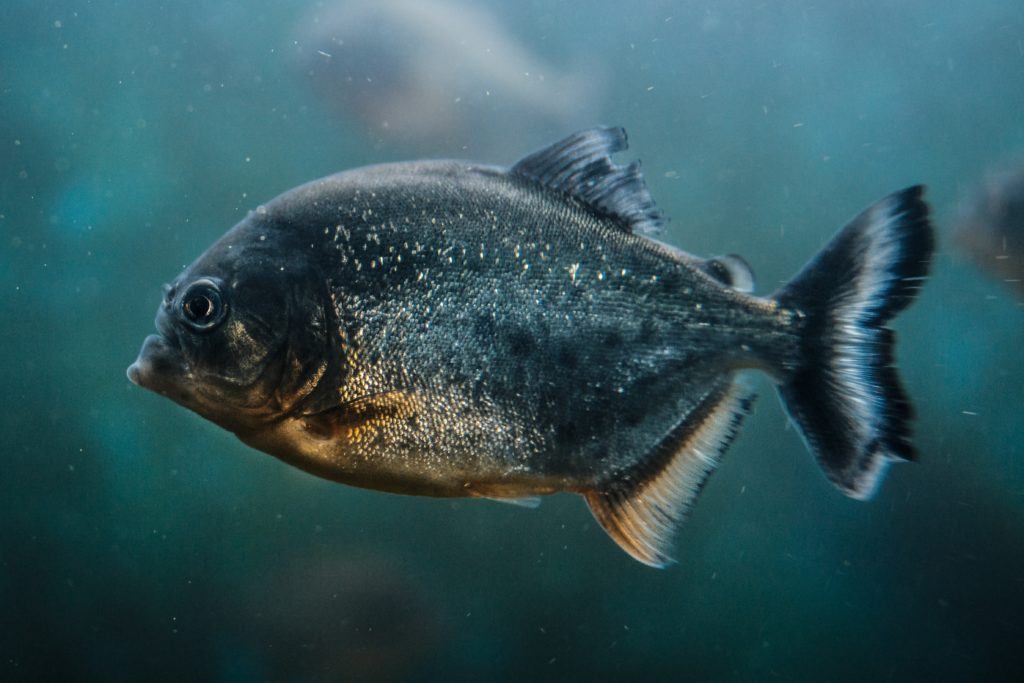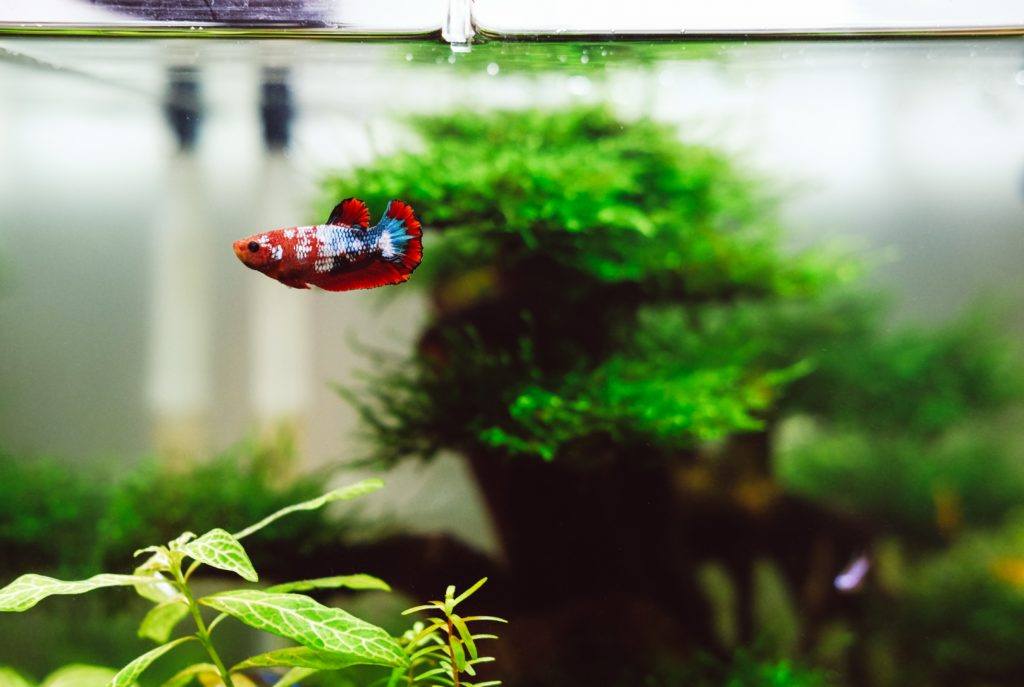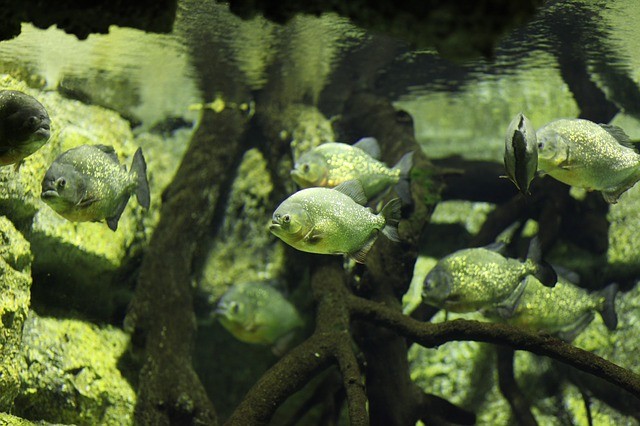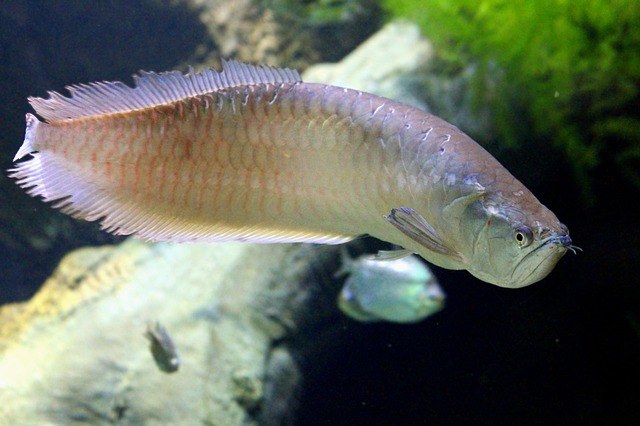Fish are some of the easiest pets to care for, according to pop culture. However, none of the children on your favorite TV shows ever had to worry about overly-aggressive tank mates.
Predatory freshwater fish are a real concern. When bringing one of these aggressive fish into your home aquarium, you have to consider both how you’re going to house them and whether or not they’re a species you feel comfortable caring for in the long term.
Fish that eat other fish make as good of pets as any other breed of fish, but you’ll want to know which species are more aggressive than others.
Here we’ll break down nine of the most predatory freshwater breeds for home aquariums, so you can decide if they’re a cool addition to your tank or more trouble than they’re worth.
Understanding Aggression in Freshwater Fish
There are a number of reasons for freshwater fish to become aggressive, with the majority of them typed up in natural instinct.
According to the writers at Chewy, fish aggression is as evolutionary as the aggression displayed by predators on land.
Reasons, then, can include:
Territory Debates
When two fish of the same species live in a shared habitat, they will determine who gets to inhabit the space by establishing their dominance over that space – or, in other words, they’ll fight over the area.
Whoever wins is king of the hill.
Sexual Rivalries
When fish are preparing to mate, males, in particular, are known to become especially aggressive in order to ward off other fish.
This aggression can take the form of a mating display or of an all-out fight, depending on the behavior of the encroaching male.
General Intelligence
As will be explored later, the most aggressive freshwater fish are usually the most intelligent.
This increase in fish intelligence suggests that not only are the aforementioned sexual rivalries and territory debates especially important and memorable, but that aggressive fish can establish social and predatory hierarchies.
These fishes’ ability to identify individual creatures and respond accordingly makes them highly engaging for humans, as well as a bit dangerous for fish who can’t keep up with the learning curve.
Fish weed out potential rivals by evaluating their appearance. Researchers at Monash University note that color, scale patterns, and body type all influence the way one fish behaves around another.
Because fish of the same species tend to be more aggressive towards each other, if the encroaching fish looks too similar, another fish of the same or similar species will take the opportunity to attack.
Managing Aggressive Fish Tanks
With that in mind, a conscientious fish owner should keep aggressive fish separate from one another – or entertained enough that their energy can have a healthy, less violent outlet.
Even so, there are certain breeds that, no matter what you do, are going to be more aggressive than others.
These fish often need tanks entirely to themselves and require specialized care, but that doesn’t mean they aren’t excellent companions.
Piranhas
Contrary to popular belief, these fish don’t attack humans on sight, nor do they have an insatiable craving for human flesh.
According to Josie Turner of Animal Wise, piranhas will only attack humans if there is blood or excessive movement in the water around them. In fact, piranhas are very shy and tend to be startled easily.
Keeping piranhas is still a challenge, however. Piranhas live in tropical areas, normally, and are cold-blooded so your aquarium will need to emulate that environment.
Ideally, a piranha tank should be kept at 75 degrees Fahrenheit. The tank should also have a number of spots that a piranha can hide in, so they can feel comfortable and free to retreat, should they become overwhelmed.
As for tank mates, it’s best to keep piranhas among their own species, as they are a carnivorous fish. Even so, be careful when introducing piranhas into a social tank, and try to keep your tank single-gendered in order to prevent displays of male dominance.
The hiding places mentioned earlier will come in handy if you hope to deter your piranhas’ aggression – but these can only do so much.
Be smart with your tank set-up and make sure a single piranha’s needs are met before you introduce companions.
Here’s a video explaining more on piranha tankmates.
Green Spotted Puffer
Green spotted puffers are less well-known than their piranha brethren, but they are an incredibly smart species.
According to the writers at Pet Helpful, they’ve been known to greet their owners and to take food from your hand, if comfortable.
Like piranhas, though, they’re less inclined towards members of their own species and can become aggressive when debates arise over territory and mates.
It is best, as with piranhas, to keep only green spotted puffers in your tank, should you choose to bring this species of fish home.
When setting up a tank for green spotted puffers, be sure to install a gravel or coral substrate, as these fish are known to sleep at the bottom of their tanks.
Tanks should also be about 55 gallons in size or larger, so as to keep these fish comfortable. You’ll also want to have marine salt on hand when setting up this tank.
Even though green spotted puffers are advertised as freshwater fish, Eric Dockett of PetHelpful emphasizes that they prefer brackish water. As such, keeping marine salt circulating will improve the species’ health.
Tiger Barbs
Tiger barbs differ from the previously mentioned fish because they can be kept in tanks with other species – so long as those other fish are speedy.
Often times referred to as the Sumatra barbs, these fish can grow up to three inches in length and are notably fast in the water. Because they are also carnivorous, they can take out their stress or anger on other fish that they may share a tank with, either of the same species or of a different kind.
As such, any tank mates you place with your tiger barbs need to be able to defend themselves or escape the onslaught of a disturbed tiger barb.
Tiger barbs, according to the writers at Petcha, do best in long tanks. They are less likely to become aggressive if their population is well managed. As such, don’t overcrowd your tiger barb tank and make sure that the tank is 55 gallons at the least.
Arowanas
Speaking of fish named after predatory land animals, we come to the arowana – otherwise known as the Dragon Fish.
Arowanas can grow to be quite large and, thereby, need a large tank in order to accommodate them. An aquarium of 75 gallons is the minimum size for this species, with an increase of 20 gallons for each fish added.
This size upgrade is mandatory, otherwise, infighting will get out of control. According to researchers at the Smithsonian’s National Zoo and Conservation Biology Institute, these fish are well-known in their native South America as carnivorous hunters.
While you may be safe as a human, other non-arowana fish you keep at home need to stay in a separate tank, lest they become the prey of these larger fish.
Oscars
Oscar fish are also exceptionally large fish that need a fair amount of room to move; that is, if they’re to remain as non-aggressive as evolutionarily possible.
Keeping oscars calm isn’t exactly the easiest process in the world. They’re some of the most aggressive cichlids available to buy as pets today.
According to the writers at Fishkeeping World, these fish grow exceptionally fast, at or exceeding a rate of one inch per month. By the time they’re finished growing, oscars can be about one foot in length. That’s a lot of weight for these fish to throw around when they’re feeling cramped!
Fishkeeping World suggests that, due to their size, temperament, and messiness, fish owners should only keep one to two oscars at a time. More than that will lead to the tank becoming cramped, and the fishes’ moods will grow dark.
Siamese Fighting Fish
With a name like “fighting fish,” it’s no surprise that these fish are aggressive. Siamese fighting fish, more commonly known as bettas, have a reputation for violence that almost exceeds that of the piranha.
Betta fish are said to have originally been found in the waters of Thailand, or Siam, but they’re now a well-known and popular breed to keep around the world.
As Shirlie Sharpe of The Spruce Pets notes, male bettas should not be kept together if you want to preserve the health of the fish in your tank. Male bettas are, after all, notoriously aggressive.
Male bettas should also not be kept with any other species of fish. Female bettas, on the contrary, can be kept together in reasonably peaceful schools, to the point where one male can even be introduced to the group without any resulting conflict.
With that said, bettas need at least 30 gallons of warm water to move around in if peace is to be maintained.
Convict Cichlids
With a similarly ominous name, we have the convict cichlids. These cichlids are gorgeous in coloring, usually striped with black over green and grey scales.
Like the other aggressive fish on this list, convict cichlids need to be kept in same-species schools, or their aggression will drive them to be the only beautiful fish in your tank.
Their competitive nature is extremely prominent, so limiting the number of rivals they encounter is very important for keeping the peace.
Unlike other fish within this guide, the writers at LiveAquaria note that convict cichlids are not solely carnivorous. In fact, they’re omnivorous. As such, feeding convict cichlids is a little easier than feeding piranhas, as their diet can be more diverse.
The writers at LiveAquaria go on to recommend that these fish be given a reasonable amount of room to maneuver in – at a minimum, 30 gallons – so that they can eat, find territory, and mate in peace. If they’re allowed to do so, this species is a docile, colorful addition to your tank.
Rainbow Sharks
Then there is the rainbow shark to consider. While the term “shark” may draw hesitation, these fish are not exceptionally large and can be kept in home tanks of a reasonable size.
Doctors Foster and Smith of Animal Planet note that rainbow sharks prefer to live among driftwood, rocks, and thick vegetation – all of which serve to replicate the shark’s natural habitat.
Foster and Smith also note that, while the rainbow shark is considered an omnivore like the convict cichlid, these fish are extremely aggressive toward other rainbow sharks. As such, this fish will likely need to be kept in a solitary tank or alongside equally aggressive fish of a different species.
Here’s a video showing some information on rainbow shark care.
Bala Sharks
Finally comes the bala shark. Unlike the rainbow shark, bala sharks are somewhat passive in their behavior, though they do have aggressive tendencies.
Like rainbow sharks, though, bala sharks require large aquariums full of driftwood, larger rocks, and thick vegetation in order to feel comfortable.
The writers at LiveAquaria, when discussing bala sharks, note that these fish can be kept in a community of three or more and still remain healthy, as the species is not inclined to take out its aggression on its own kind.
The species’ omnivorous nature also guarantees that, while they may lash out and eat a tank mate or two that isn’t as aggressive as they are, they’re just as likely to munch on vegetable-based foods when hungry.
Conclusion
The aggression in these nine species of fish can be intimidating, especially if you’re hoping to own one as a pet. However, don’t let their violent nature deter you.
Fish with less passive temperaments need more attentive care than other species, but their intelligence and evolutionarily ingrained behavior make them intriguing and delightful companions.
So, when you’re putting together your fish tank, consider not only the amount of room you have in your home, but the kind of environment that your fish will need and how you can personalize a tank to suit the more bite-y species.
Do you own any aggressive freshwater fish?






